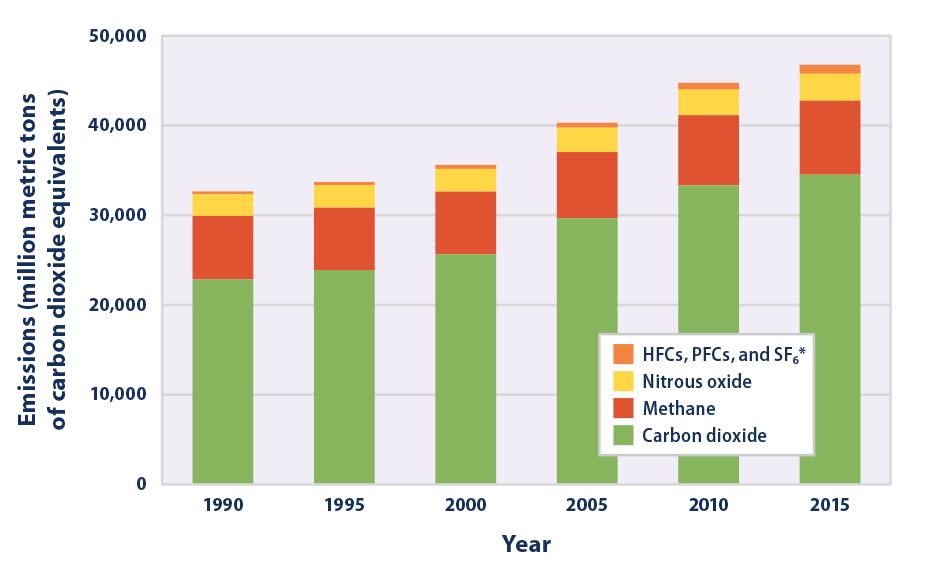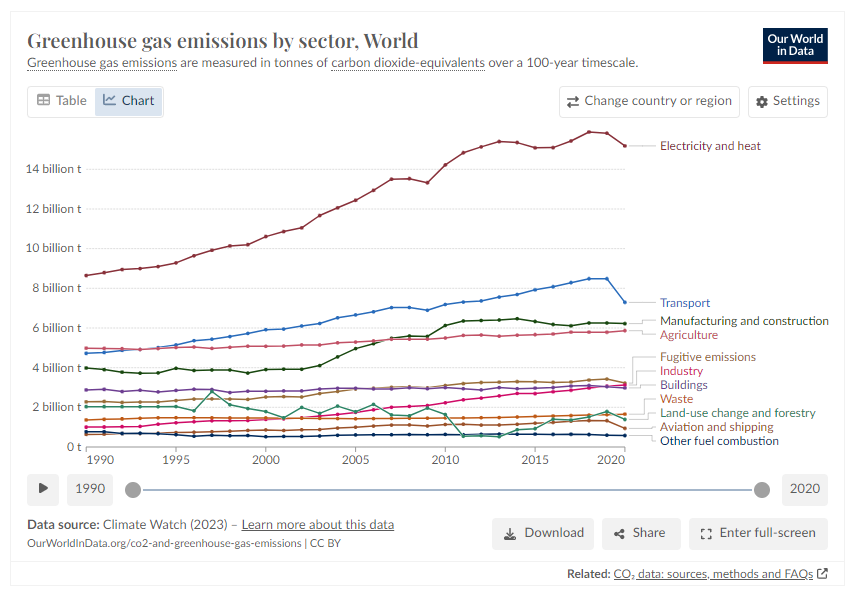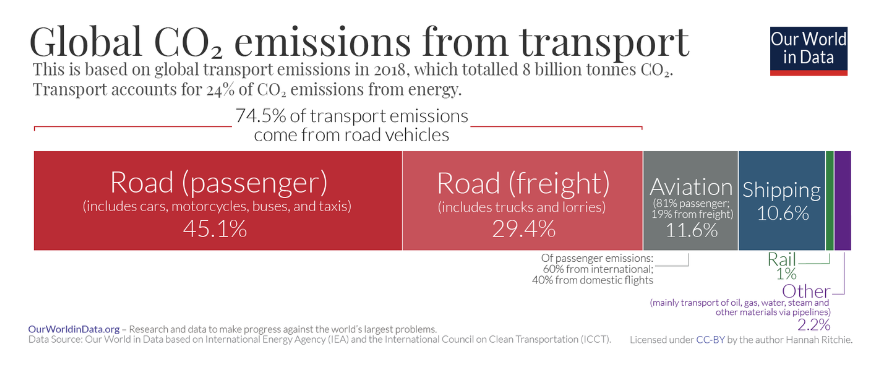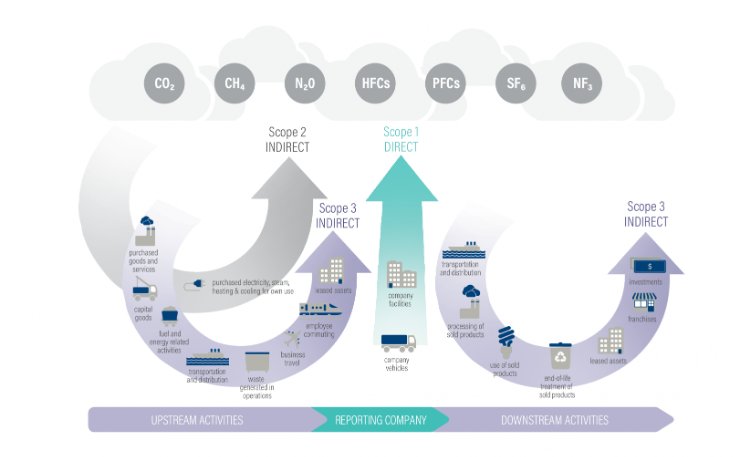
.png)
The Guide to key metrics in the decarbonisation journey
By Eva Båsk, Head of GoodZero
Beyond achieving neutrality: A comprehensive approach to carbon management
CO2 vs. CO2e
As businesses embark on their sustainability journey, they encounter terms such as CO2 and CO2e, referring to carbon dioxide and carbon dioxide equivalent. Those who find themselves perplexed by the notion of carbon dioxide equivalent are not alone in their confusion. So, what exactly is the difference between these two?
Both terms measure global warming potential, but CO2e includes greenhouse gases besides CO2. Therefore, CO2e is recommended for its accuracy in measuring global warming potential as well as measuring the environmental impact of manufactured goods. The 'e' stands for 'equivalent,' signifying the inclusion of six other greenhouse gases. CO2 is the most prevalent among them.
With an increasing number of companies directing attention towards environmental, social, and governance (ESG) objectives due to government regulations and consumer expectations, and because businesses can create value with a strong ESG proposition[i], there is a growing emphasis on comprehending their own carbon footprint. This footprint signifies the overall volume of greenhouse gases produced by a company or individual, necessitating a detailed understanding of CO2e rather than merely CO2.
Greenhouse gases and their impact
To comprehend the distinction between carbon dioxide and carbon dioxide equivalent, it is essential to delve into the understanding of greenhouse gases and their significance. In its simplest terms, greenhouse gases refer to gases that amplify sunlight and trap heat in the earth's atmosphere. These gases contribute to warming the climate, triggering various changes globally — in the atmosphere, on land, and in the oceans.
There are seven primary greenhouse gases, with Carbon Dioxide (CO2e) being the most substantial contributor. It is emitted primarily through the burning of fossil fuels (oil, natural gas, and coal), solid waste, and trees and wood products. The other greenhouse gases include Methane (CH4), Nitrous Oxide (N2O), HFCs (Hydrofluorocarbons), PFCs (Perfluorocarbons), SF6 (Sulphur hexafluoride), and NF3 (Nitrogen trifluoride).
According to the International Panel for Climate Change (IPCC), greenhouse gases resulting from human activities have been the primary driver of observed climate change since the mid-20th century. [ii] The prolonged presence of major greenhouse gases in the atmosphere, lasting for tens to hundreds of years after release, leads to persistent warming effects, impacting both current and future generations.
Climate Change Indicators: Global Greenhouse Gas Emissions, 1990-2015
This indicator describes emissions of greenhouse gases worldwide.

Source: https://www.epa.gov/climate-indicators/climate-change-indicators-global-greenhouse-gas-emissions
This figure shows worldwide emissions of carbon dioxide, methane, nitrous oxide, and several fluorinated gases from 1990 to 2015. For consistency, emissions are expressed in million metric tons of carbon dioxide equivalents. These totals include emissions and sinks due to land-use change and forestry.
* HFCs are hydrofluorocarbons, PFCs are perfluorocarbons, and SF6 is sulfur hexafluoride.
Data sources: WRI, 2021;2 FAO, 20203
Web update: April 2021
Overview Greenhouse Gas Protocol
In this video, you can see an overview of the Greenhouse Gas Protocol (GHGP), a framework developed by the World Resources Institute and the World Business Council for Sustainable Development.
Source of video: World Resources Institute
The United States Environmental Protection Agency (EPA) reports a substantial increase in the total warming effect from greenhouse gases added by humans to the earth's atmosphere, noting a 45% rise from 1990 to 2019. [i] Carbon dioxide, in isolation, contributed to a 36% increase in the warming effect, as stated by the EPA. Between 1750 and 2011, CO2 has contributed more to climate change than anything else, according to the Union of Concerned Scientists, a science-based non-profit organisation.[ii]
Greenhouse gases are responsible for rising sea levels, exacerbating issues such as flooding, hurricanes, fires, and droughts. These challenges pose significant problems for companies, jeopardising business continuity and causing disruptions in supply chains. Sustainable business operations are no longer considered a luxury but have become an absolute necessity for survival.
Throughout the lifecycle of manufactured products and their transportation all over the world, greenhouse gases are generated, and quantifying them provides a means of measuring environmental impact.
The Greenhouse Gas Protocol
The Greenhouse Gas (GHG) Protocol, a globally recognised standard developed by the World Resources Institute (WRI), is essential for corporate accounting and reporting of GHG emissions.[iii] Aligned with the 2015 Paris Agreement's goals[iv], the protocol aids in accounting, reporting, and mitigating emissions. It outlines processes for a successful carbon management program, categorising emissions into Manufacturing, Transportation, Utilization, and Disposal stages, aligning with the GHG Protocol.
The GHG Protocol furnishes businesses, local and national governments with accounting and reporting standards, sector guidance, calculation tools, and training. This protocol has established a comprehensive, standardised global framework for measuring and overseeing emissions across private and public sector operations, value chains, products, cities, and policies. Its aim is to facilitate greenhouse gas reductions universally.

Source: https://ourworldindata.org/emissions-by-sector

Source: https://ourworldindata.org/co2-emissions-from-transport
Scopes 1, 2, and 3
Organisations extensively embrace the GHG Protocol, classifying emissions into Scope 1, Scope 2, and Scope 3 — terminology commonly employed in our daily discussions. Yet, what precisely do these terms signify?
While Scope 1 covers direct emissions, Scope 2 deals with indirect emissions, and Scope 3 encompasses indirect emissions throughout the value chain. Traditionally, the focus has been on Scope 1 and 2 emissions, but the current emphasis is on measuring and reducing Scope 3 emissions to meet regulatory requirements and consumer pressures.
Overview of GHG Protocol scopes and emissions across the value chain.

Source: https://www.wri.org/initiatives/greenhouse-gas-protocol
GoodZero's contribution
GoodZero, along with its sister brands GoodShipping and GoodFuels, is part of FincoEnergies, providing sustainable, low-carbon energy solutions. We believe in robust and transparent carbon markets, contributing to projects that genuinely mitigate global warming. Our portfolio, covering various categories from nature-based to tech-driven, empowers customers to calculate, reduce and, along the reduction journey, offset the unavoidable emissions, using carbon credits.
Our project selection principles are strict. That is why we actively scout innovative projects, such as Running Tide, which mitigates environmental impact by removing carbon and improves ocean health and biodiversity, and CarbonCure, which revolutionises concrete production by injecting captured carbon dioxide into concrete, reducing and removing CO2 emissions.
GoodZero supports organisations in assessing and validating science-based targets for emissions reduction plans. We offer comprehensive services and validation through SBTi, the Science Based Targets initiative[i], providing a framework to assess and validate greenhouse gas reduction plans. We help by purchasing and permanently removing carbon credits from the voluntary carbon market, ensuring transparency in sharing environmental benefits with stakeholders.
Conclusion
By embracing the measurement of CO2e, adopting the GHG Protocol, and actively reducing emissions across Scopes 1, 2, and 3, organisations can significantly contribute to mitigating climate change. Every stride taken in diminishing environmental impact plays a crucial role in shaping a more sustainable future. GoodZero stands as a dedicated partner in this journey, offering comprehensive solutions to support organisations in achieving their decarbonisation objectives.
At GoodZero, we firmly advocate for the responsible use of carbon credits solely to offset truly unavoidable emissions. Organisations should not postpone their net-zero reductions and must offset recurring emissions. A rising pattern among companies is the integration of voluntary carbon credits into their broader climate action plans. This is driven by their flexibility and a preference for projects that offer additional environmental and social benefits. This signals a shift towards a unified approach to climate action, where carbon credits play a crucial role alongside direct emission reductions. It shows that carbon credits are not employed as a mere delay tactic or to evade significant climate action; rather, they form an integral part of a strategy aimed at expediting global climate action and business decarbonisation.[i]
GoodZero’s commitment extends to fostering robust and transparent carbon markets, instilling confidence and backing into projects that authentically combat global warming. We are dedicated to aiding businesses in reaching their sustainability objectives. Together, we have the power to make the world a better place.

Talk to an expert
Take the decisive step towards a sustainable future by partnering with GoodZero today, and begin actively managing your carbon footprint with our comprehensive decarbonisation solutions tailored for impactful results






.png)